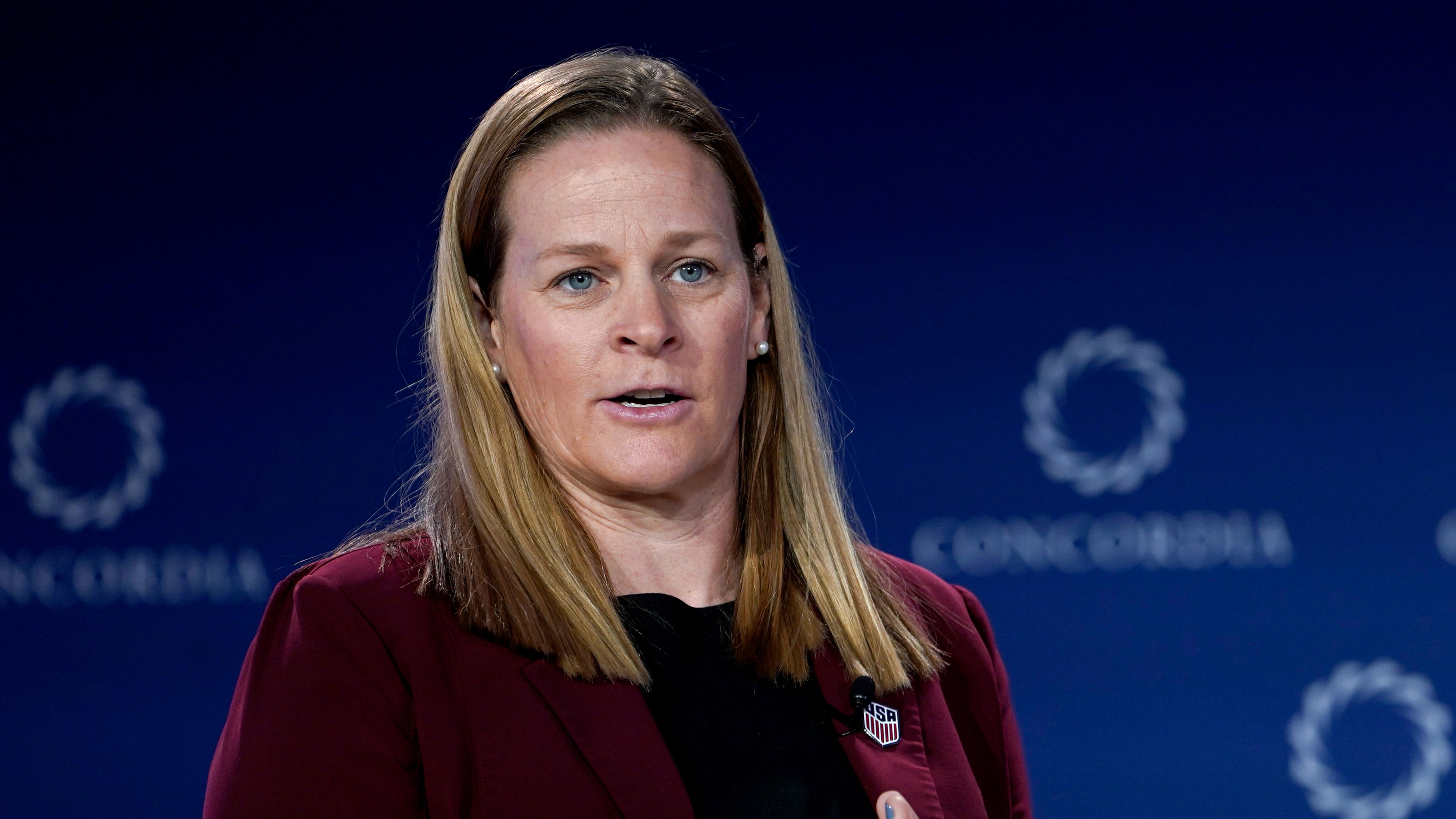Unveiling the Financial Surge in US Soccer Revenue Ahead of the 2026 World Cup
In a year marked by growing enthusiasm for the upcoming 2026 World Cup, US Soccer revenue has reached new heights, signaling a pivotal moment for the organization. This financial boost reflects heightened global interest and strategic partnerships, positioning the United States Soccer Federation (USSF) for continued success on and off the field.



Rising Sponsorship Revenues Amid 2026 World Cup Hype
The increasing fervor for the 2026 World Cup is clearly visible through enhanced corporate backing, where USSF’s sponsorship earnings climbed by 19% to $121.1 million. This growth underscores how major events can attract more business alliances, fueling the federation’s financial engine.
New Partnerships Driving Financial Growth
Throughout the fiscal year, USSF forged key agreements with prominent brands like The Home Depot, Bank of America, Henkel, Jim Beam, and Haleon. These collaborations not only broaden the federation’s reach but also provide essential funding to support various programs and initiatives.
Analyzing the Drop in Net Profits Despite Revenue Gains
Although total earnings have soared, it’s important to highlight a slight downturn in USSF’s net profits, dropping from $9.1 million in 2024 to $8.3 million in 2025. This shift might stem from increased operational costs or investments, offering a nuanced view of the federation’s fiscal health.
Diversifying Revenue Streams Through Philanthropy and Infrastructure
Beyond sponsorships, USSF has effectively tapped into charitable donations, amassing $50.3 million. Furthermore, the ambitious $250 million National Training Center development near Atlanta has ignited a wave of donation drives, helping to secure long-term sustainability for US Soccer’s endeavors.
Upcoming Challenges and Opportunities for US Soccer Teams
The coming weeks are set to be action-packed for US Soccer’s top squads. Under Mauricio Pochettino, the US men’s national team (USMNT) will welcome exhibition matches against Paraguay on November 15 and Uruguay on November 18. Meanwhile, Emma Hayes’ US women’s national team (USWNT) is scheduled to face Italy on November 28, with a repeat showdown against them on December 1, keeping fans on the edge of their seats.
Record Revenue Milestone for U.S. Soccer in 2025
Understanding the $263.7 Million Revenue Surge
U.S. Soccer’s financial performance in 2025 has reached an impressive new high with a record $263.7 million in revenue, marking the highest figure in eight years. This growth reflects a broader surge in interest in soccer across the United States, fueled by increasing participation at youth and professional levels. As soccer enthusiasts and stakeholders dive into the numbers, it’s clear that this revenue boost is more than just a statistic-it’s a sign of the sport’s evolving popularity and strategic investments.
Key to this achievement is the organization’s ability to diversify income streams. For instance, broadcasting rights and partnerships have played a pivotal role, with deals from major networks and streaming services contributing significantly. The 2025 revenue not only tops previous years but also underscores how U.S. Soccer is capitalizing on global events like the upcoming 2026 World Cup to enhance its financial standing.
Breakdown of Revenue Sources
Let’s break down the main contributors to U.S. Soccer’s 2025 revenue to give you a clearer picture of where the money is coming from:
- Sponsorship and Partnerships: Corporate sponsors have poured in funds, with deals from global brands like Nike and Adidas reaching new heights. These partnerships often include exclusive merchandising rights and promotional events, generating upwards of $100 million alone.
- Ticket Sales and Events: Live events, including international friendlies and domestic leagues, have seen a spike in attendance. For example, U.S. men’s and women’s national team matches sold out arenas more frequently, bringing in approximately $80 million from ticket revenues and related hospitality services.
- Broadcasting Deals: Streaming platforms and TV networks have bid aggressively for rights, driven by the growing excitement for the 2026 World Cup. This category alone accounted for about $50 million, as audiences tune in for high-quality coverage of U.S. Soccer’s competitions.
- Merchandise and Licensing: Fan engagement through official gear and licensed products has exploded, with online sales platforms reporting double-digit growth. Items like jerseys and memorabilia tied to star players have become hot sellers, adding another $20 million to the pot.
- Other Sources: Grants, youth programs, and international collaborations rounded out the rest, emphasizing U.S. Soccer’s commitment to grassroots development.
This diversified approach ensures stability, even as external factors like economic shifts influence the landscape.
Factors Driving U.S. Soccer’s Growth in 2025
Several key elements have propelled U.S. Soccer to this revenue peak, especially with the 2026 World Cup on the horizon. The anticipation surrounding the tournament, co-hosted by the U.S., Canada, and Mexico, has created a buzz that’s translating into tangible financial gains.
- Increased Fan Engagement and Digital Presence: U.S. Soccer has ramped up its social media efforts, with engaging content like behind-the-scenes footage and player interviews drawing millions of views. This has not only boosted brand loyalty but also attracted new sponsors looking to tap into a younger demographic.
- Youth and Grassroots Initiatives: Investments in youth soccer programs have paid off, with participation rates soaring. For instance, initiatives like U.S. Soccer’s development academies have led to more talent pipelines, indirectly supporting revenue through expanded events and partnerships.
- Economic and Cultural Shifts: The post-pandemic recovery has seen more people embracing soccer as a family-friendly activity. With the U.S. economy stabilizing, fans are more willing to spend on tickets and merchandise, further amplified by the cultural excitement around hosting the 2026 World Cup.
In particular, the 2026 World Cup excitement is acting as a major catalyst. Cities like Los Angeles and New York are already seeing infrastructure upgrades for the event, which is expected to draw global tourists and generate indirect revenue for U.S. Soccer through hospitality and tourism tie-ins.
The Role of Strategic Investments in Sustaining Revenue
To maintain this momentum, U.S. Soccer has focused on strategic investments that align with long-term goals. For example, enhancing training facilities and player development programs not only improves on-field performance but also makes the organization more attractive to investors.
Here’s a closer look at some specific strategies:
- Enhancing Player Welfare and Performance: By prioritizing athlete health and performance analytics, U.S. Soccer is fostering a professional environment that draws top talent. This, in turn, boosts team success and fan interest, directly impacting revenue streams like endorsements.
- Marketing and Branding Efforts: Targeted campaigns around key matches and the 2026 World Cup have utilized SEO-friendly keywords such as “U.S. Soccer revenue growth” and “2026 World Cup excitement” to reach wider audiences. These efforts include optimized content on websites and social channels, helping to drive organic traffic and sponsorship inquiries.
- Sustainability and Community Impact: U.S. Soccer’s emphasis on eco-friendly initiatives, like reducing carbon footprints for events, appeals to socially conscious partners. This has opened doors to new revenue from green sponsors, aligning with global trends in sustainable sports.
As we look at the data, it’s evident that U.S. Soccer’s proactive approach is setting the stage for even greater success. With the 2026 World Cup less than a year away, experts predict that revenue could climb higher, potentially exceeding $300 million, if current trends continue.
Challenges and Opportunities Ahead for U.S. Soccer Revenue
While the 2025 figures are cause for celebration, there are hurdles that could affect future growth. For instance, economic uncertainties might impact sponsorship renewals, but opportunities like expanding women’s soccer leagues could offset this.
- Navigating Economic Pressures: Inflation and market fluctuations have made some sponsors cautious, yet U.S. Soccer’s diversified portfolio helps mitigate risks.
- Leveraging Technology: Innovations in virtual reality for fan experiences and AI for ticket sales optimization are poised to create new revenue avenues.
- Global Competition: As other nations ramp up for the 2026 World Cup, U.S. Soccer must continue innovating to stay ahead in the global soccer revenue race.
By addressing these areas, U.S. Soccer can build on its 2025 success and keep the momentum going strong.
In exploring these aspects, it’s clear that the record $263.7 million revenue isn’t just a number-it’s a testament to the passion and strategic vision driving the sport forward in the U.S.









